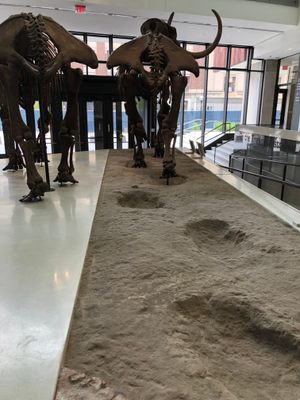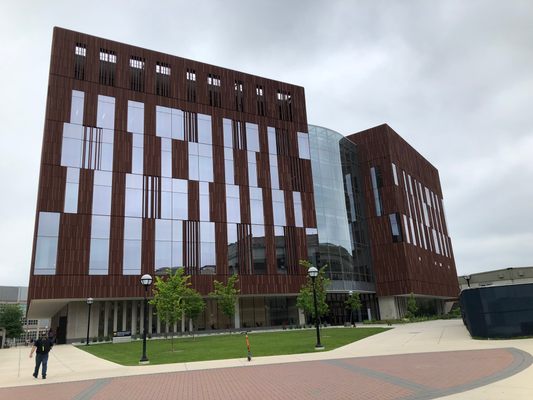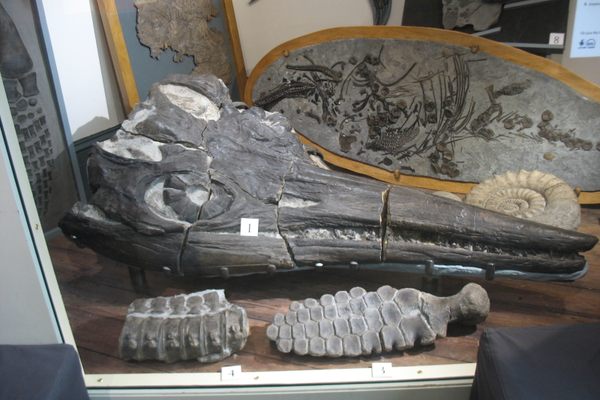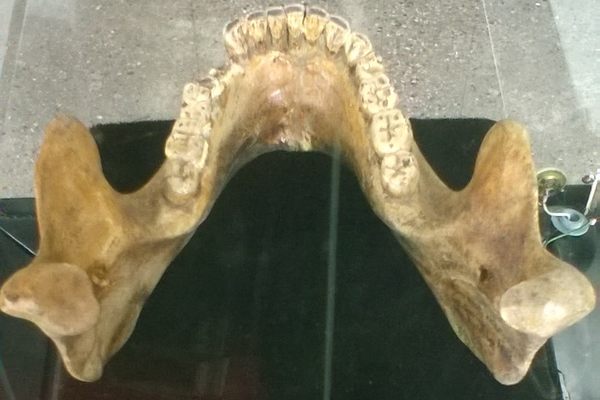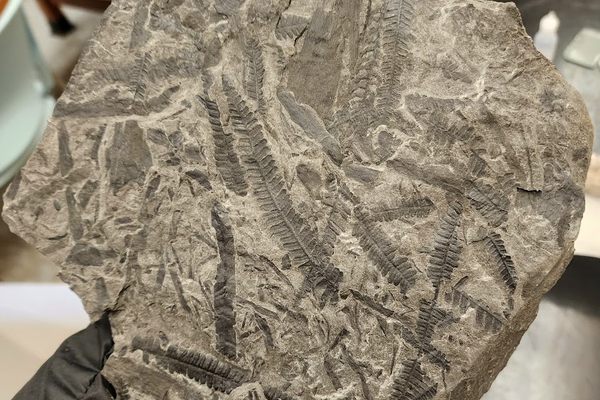About
In 1992, while dredging a pond, a farmer in Saline, Michigan, discovered the prehistoric tracks of a mastodon, a hairy relative of elephants once found throughout North America 11,000 years ago. Daniel Fischer, a professor of geology and biology at the University of Michigan, further investigated the tracks along with a group of assistants. The team eventually uncovered over 20 of the large, circular footprints.
Since the original tracks were too fragile to excavate, Fischer and his team made a 40-foot cast of some of the footprints and brought it back to the University of Michigan’s Exhibit Museum (now known as the Museum of Natural History) to put on display.
While mastodon bones are relatively common in North America, trackways are rare. Wind and rain tend to erase footprints, but if sediment fills them in quickly they may be preserved. While individual mastodon footprints have been found in California, Nevada, New Mexico, and South Dakota, the Saline prints are the longest known trackway made by a single individual. These tracks suggest that male mastodons were probably solitary, like modern male elephants.
Today the tracks feature prominently in the Museum of Natural History’s entry gallery, along with skeletons from a male and female mastodon. The right leg bones of the male mastodon are 3-D printed models made from scans of other fossils.
Related Tags
Know Before You Go
Parking is available at several parking structures in downtown Ann Arbor.
Community Contributors
Added By
Published
August 11, 2022

